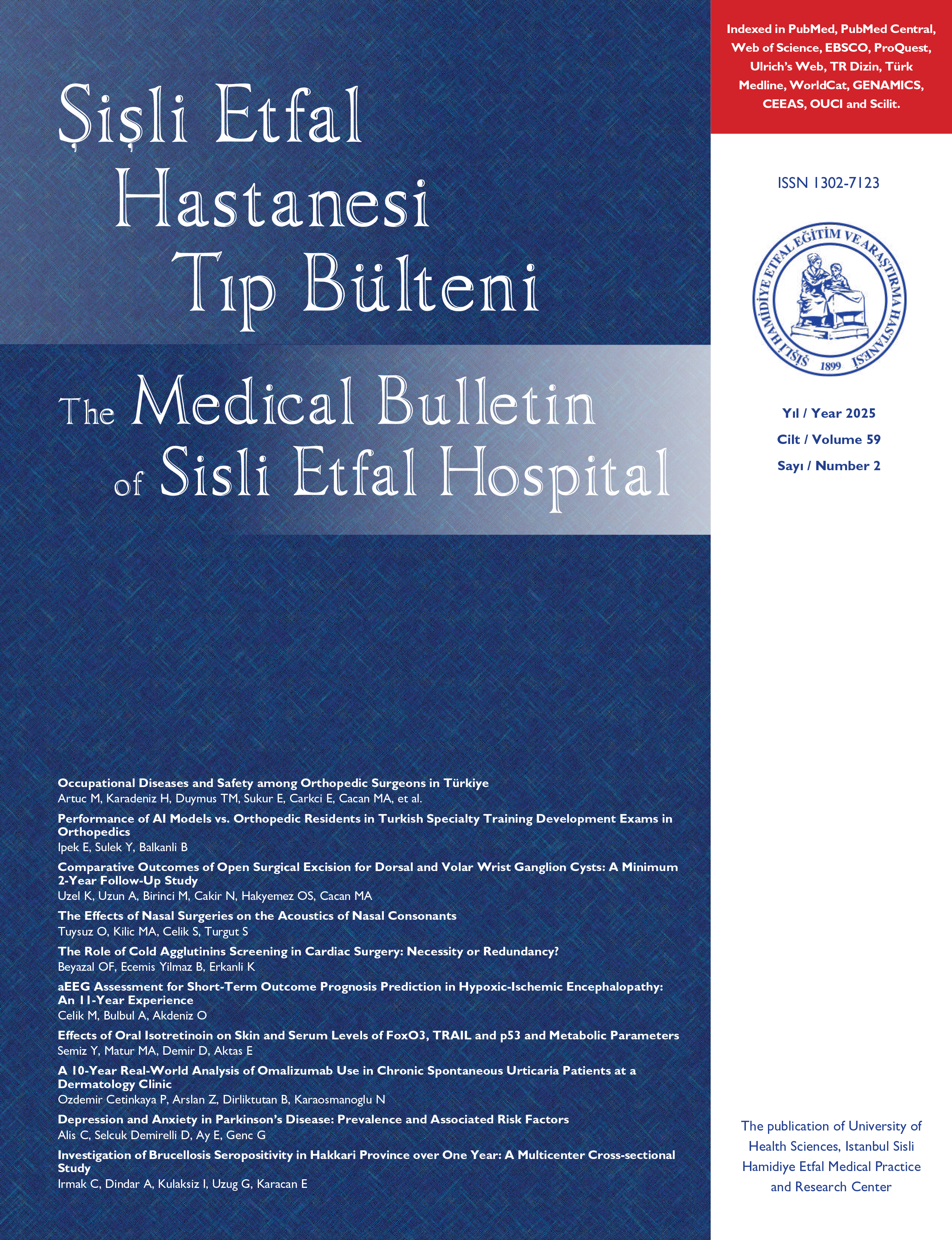
Adölesan ve Genç Erişkin Dönemi Yumuşak Doku Sarkomları
Alpaslan Mayadağlı, Mehtap Dalkılıç Çalış, Oktay IncekaraŞişli Etfal Eğitim ve Araştırma Hastanesi, Radyasyon Onkolojisi Kliniği, İstanbulAmaç: Genç erişkinlerde görülen yumuşak doku sarkomları; yerleşim bölgeleri, histolojik tipleri ve tedaviye yanıtları bakımından çocuklarınkinden farklı özellikler taşımaktadır. Radyoterapi, bugünkü yumuşak doku sarkomlarının standart tedavisinde kesin yerini almıştır. Mikrometastazların önlenmesi ve metastazların kontrol altına alınabilmesi için tedavide kemoterapinin yeride sorgulanmaya başlamıştır. Bu çalışmada 1990-1998 tarihleri arasında kliniğimize müracaat eden adölesan ve genç erişkin dönemi yumuşak doku sarkomu tamlı hastalar retrospektif olarak değerlendirilmiştir.
Gereç ve Yöntem: 1990-1998 tarihleri arasında 15-30 yaş arası yumuşak doku sarkomu tanılı 41 hasta kliniğimize müracaat etmiştir. Erkek hasta 25, kadın hasta 16 idi. (Erkek/Kadın: 1.6). 8 hasta fibrosarkoma (%20), 7 hasta leionıyosarkoma (%17), 6 hasta rhabdomyosarkomadır. (%15) Tümörün en sık yerleşim yeri; 13 hasta (%32) alt ekstremdedir. Tümör çapı ortalama 9.5 cnı.dir. 16 hasta stage 4 (%39), 14 hasta stage 3 (%34)tür. En sık akciğer metastazı görülmüştür. 38 hastaya (%93) sistemik kemoterapi, 26 hastaya (%63) radyoterapi uygulanmıştır. Ortalama sağ kalını süresi 31 ay, 2 yıllık sağ kalım oranı %46dır.
Sonuç: Sağ kalım üzerine etkili faktörler olarak; stage, grade, lenfatik durum, 5 cm.den küçük tümör çapı, ekstremite yerleşimi, metastazektomi uygulanması ve negatif cerrahi sınır durumu bulunmuştur.
Anahtar Kelimeler: Yumuşak doku sarkomu, adölesan ve genç erişkin, cerrahi, radyoterapi, kemoterapi
Soft Tissue Sarcoma In Adolescents And Young Adults Our Climcal Results
Alpaslan Mayadağlı, Mehtap Dalkılıç Çalış, Oktay IncekaraDepartment of Radiation Oncology, Şişli Etfal Training and Research Hospital, Istanbul,TurkeyPurpose: The soft tissue sarcomas in young adults havt different characteristics than those in children in terms o localization, histological type and response to theraphy Currently radiotheraphy has a secure place in the standar treatment of soft tissue sarcomas. The role of chemotheraph is being questioned to prevent micrometastases and contro métastasés. This study evaluates retrospectively those patient, diagnosed with adolescent and young adult soft tissui sarcomas who applied to our clinic between 1990-1998.
Rationale And Method: Between 1990-1998, 41 patients aged 15-30, with soft tissue sarcoma diagnosis applied t< our clinic. 25 were male and 16 were female (Men/Women 1,6) 8 patients had fibrosarcoma (20%), 7 hat leiomyosarcoma ( 17%) and 6 had rhabdomyosarcoma. (15% The most frequent tumor localization was the lower extremit (13 patients, 32%). The mean tumor diameter was 9.5 err, 16 patients were at stage 4 (39%) and 14 were at stage. (34%). Lung metastasis was the most frequent one. 38 patient (93%) received systemic chemotherapy and 26 (63%) receive radiotheraphy. The average survival period was 31 month, and the 2-year survival rate was 46%.
Results: The factors effecting survival were: stage, grade tumor diameter, extremity localization, metastasectomy an negative surgery limit status.
Keywords: Soft tissue sarcoma, adolescent and young adult surgery, radiotherapy, chemotherapy
Makale Dili: Türkçe



















